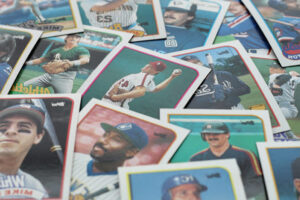When teenagers were opening penny-sized gum cards and playing a game of flipping the cards, the term “flipping” was coined. Today, however, the term “flipping” is used to describe the practice of selling cards or other collectibles for a profit after they have been purchased.
Although it is a talent that requires some familiarity with card prices, it is always possible to profit from cards. Verification, packaging, and numerical grading can improve the value of “raw” cards that would otherwise have a lower value.
This is one of the ways that some dealers make money. In this case, the profitable strategy is to buy “raw” cards with upside potential for grading.
What Is Grading?
When a card is graded, it’s assigned a numerical value based on its overall condition and encapsulated in a plastic case to maintain the card’s condition. Half grades, for example, are given as X.5 on a scale of 1-10. The card is graded by a third-party grading company. Currently, the sports card industry has three primary rating services: PSA, BGS, and the Sports Card Guaranty Corporation (SGC).
The companies may use different criteria and meanings for grading. Nonetheless, they all use the same standards. Now that we know what grading means, let’s find out what to look for when buying raw cards.
Focus on the All-Time Star Cards
The fascination with Mickey Mantle, Mike Trout, Ty Cobb, Ted Williams, and Hank Aaron will always exist. But at the same time, the value of Bryce Harper’s rookie card dropped from $350 to less than $100 last year. That’s why All-Star cards are the way to go if you want to be prepared for whatever comes your way.
Build a Relationship with the Dealer
Introduce yourself and ask about their day. Find out what sells well and what doesn’t. Remember that the price you see or have been told is only an estimate. So it pays to get along well with the dealer. Even if you don’t buy anything, you can have a good conversation with the sellers because they’re well informed about the history of sports cards.
Check the Quality of the Card
Check the front and back for stains, dents, or creases. Then check to see if the corners have been recolored and rounded. Finally, use another card from the same set to compare them. This way, you can get a better result.
Crossover the Cards
This is the case when you expect to receive a PSA 10 for a card previously rated 9.5 at BGS. This is the most common method when it comes to crossover. Investors know that PSA 10 cards are much more expensive than BGS 9.5 cards, so they buy them.
Pay attention to the under grading of BGS cards. Since they score cards on four attributes; corners, surfaces, centering, and edges, it’s sometimes possible to get a higher grade from another company.
Get in Touch
Still, have questions about sports card grading? Get in touch with us today; we’ll be happy to help.


